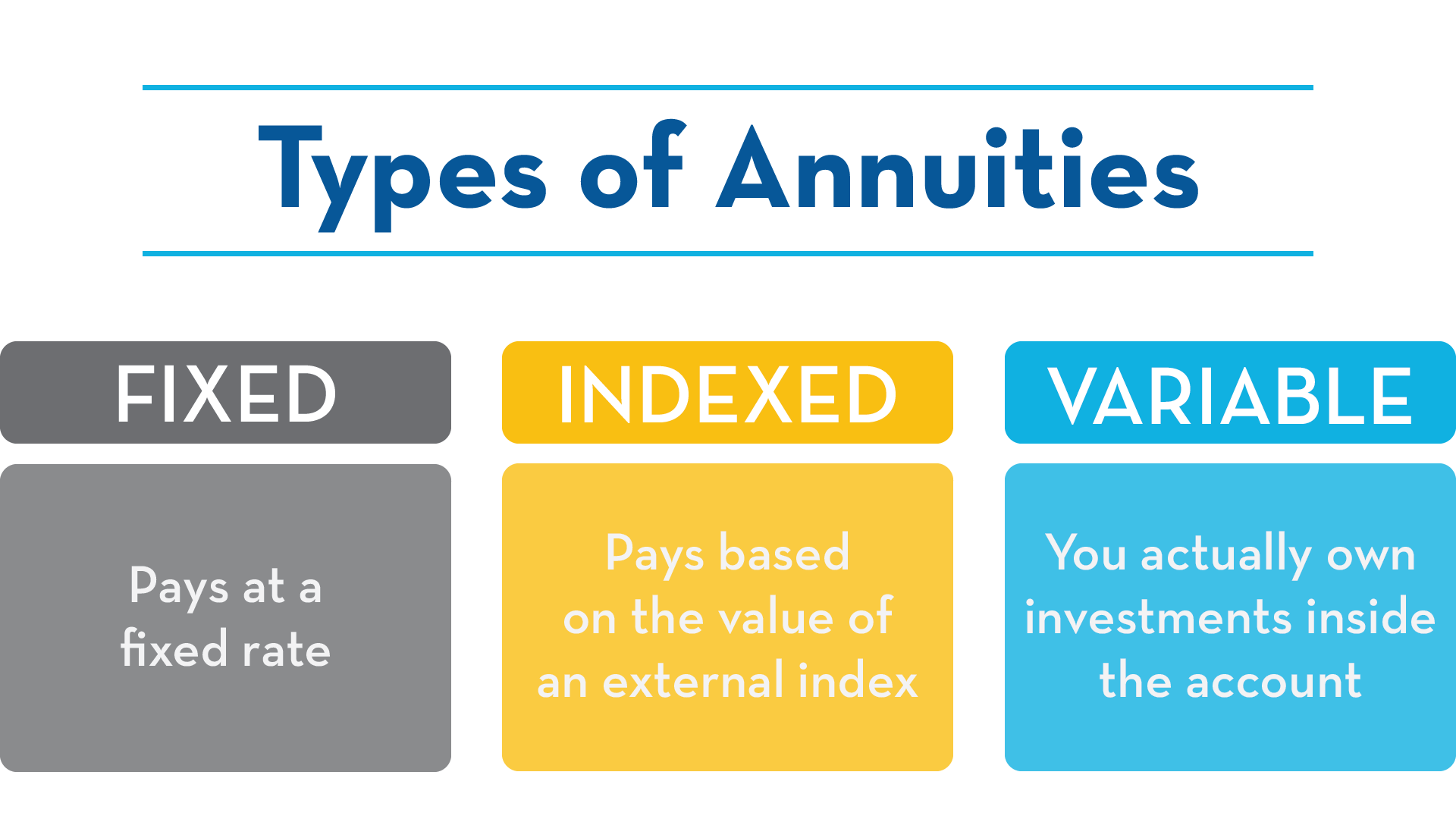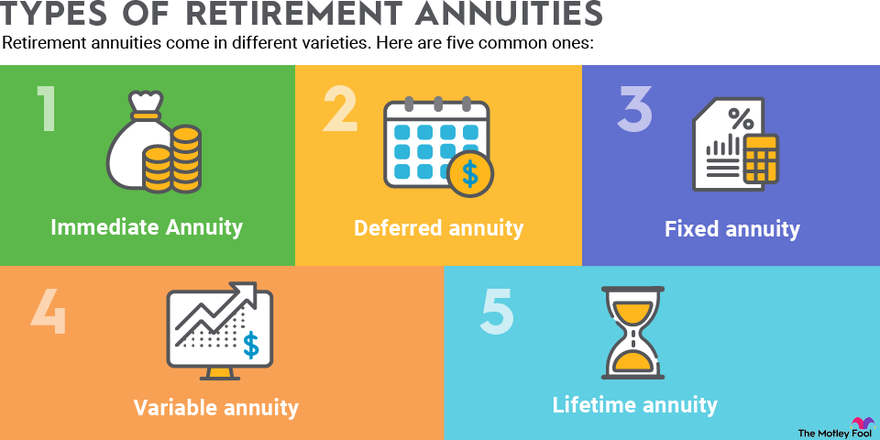All Categories
Featured
Table of Contents
Equally as with a taken care of annuity, the owner of a variable annuity pays an insurer a swelling amount or series of settlements in exchange for the pledge of a series of future settlements in return. However as discussed over, while a dealt with annuity expands at a guaranteed, constant rate, a variable annuity expands at a variable rate that relies on the performance of the underlying financial investments, called sub-accounts.

Throughout the accumulation phase, assets invested in variable annuity sub-accounts grow on a tax-deferred basis and are strained just when the agreement proprietor withdraws those revenues from the account. After the buildup phase comes the income stage. In time, variable annuity possessions must in theory boost in worth until the contract proprietor chooses she or he would certainly like to start taking out cash from the account.
The most significant concern that variable annuities typically existing is high cost. Variable annuities have numerous layers of charges and costs that can, in accumulation, produce a drag of up to 3-4% of the contract's value each year.
Decoding Choosing Between Fixed Annuity And Variable Annuity A Comprehensive Guide to Investment Choices Defining the Right Financial Strategy Features of Smart Investment Choices Why Choosing the Right Financial Strategy Is Worth Considering How to Compare Different Investment Plans: How It Works Key Differences Between Different Financial Strategies Understanding the Rewards of Fixed Income Annuity Vs Variable Annuity Who Should Consider Fixed Vs Variable Annuity? Tips for Choosing the Best Investment Strategy FAQs About Planning Your Financial Future Common Mistakes to Avoid When Planning Your Retirement Financial Planning Simplified: Understanding Variable Vs Fixed Annuity A Beginner’s Guide to Smart Investment Decisions A Closer Look at How to Build a Retirement Plan
M&E expenditure charges are determined as a percent of the contract value Annuity issuers pass on recordkeeping and other management expenses to the contract owner. This can be in the form of a flat yearly cost or a percent of the agreement worth. Administrative costs might be included as component of the M&E threat charge or may be examined separately.
These fees can range from 0.1% for passive funds to 1.5% or more for actively taken care of funds. Annuity agreements can be customized in a variety of ways to serve the particular needs of the agreement proprietor. Some common variable annuity cyclists consist of ensured minimal buildup advantage (GMAB), ensured minimum withdrawal benefit (GMWB), and ensured minimum revenue advantage (GMIB).

Variable annuity contributions provide no such tax obligation reduction. Variable annuities have a tendency to be highly inefficient vehicles for passing riches to the future generation because they do not enjoy a cost-basis change when the initial agreement proprietor passes away. When the owner of a taxable financial investment account passes away, the expense bases of the investments held in the account are adapted to show the marketplace prices of those investments at the time of the proprietor's death.
Analyzing Fixed Annuity Vs Variable Annuity A Comprehensive Guide to Investment Choices Breaking Down the Basics of Fixed Interest Annuity Vs Variable Investment Annuity Features of Smart Investment Choices Why Fixed Annuity Or Variable Annuity Matters for Retirement Planning How to Compare Different Investment Plans: Explained in Detail Key Differences Between Annuity Fixed Vs Variable Understanding the Risks of Immediate Fixed Annuity Vs Variable Annuity Who Should Consider Retirement Income Fixed Vs Variable Annuity? Tips for Choosing Fixed Interest Annuity Vs Variable Investment Annuity FAQs About Planning Your Financial Future Common Mistakes to Avoid When Choosing Fixed Vs Variable Annuity Pros Cons Financial Planning Simplified: Understanding Your Options A Beginner’s Guide to Annuities Fixed Vs Variable A Closer Look at How to Build a Retirement Plan
Heirs can inherit a taxed investment portfolio with a "tidy slate" from a tax viewpoint. Such is not the situation with variable annuities. Investments held within a variable annuity do not receive a cost-basis modification when the initial owner of the annuity passes away. This indicates that any accumulated unrealized gains will certainly be passed on to the annuity proprietor's successors, together with the connected tax problem.
One substantial concern connected to variable annuities is the potential for disputes of passion that might exist on the component of annuity salespeople. Unlike an economic consultant, that has a fiduciary obligation to make investment decisions that benefit the customer, an insurance policy broker has no such fiduciary obligation. Annuity sales are extremely lucrative for the insurance policy professionals who market them due to high ahead of time sales compensations.

Lots of variable annuity agreements include language which positions a cap on the percentage of gain that can be experienced by particular sub-accounts. These caps stop the annuity owner from totally joining a section of gains that might or else be appreciated in years in which markets create substantial returns. From an outsider's point of view, presumably that investors are trading a cap on investment returns for the abovementioned guaranteed flooring on investment returns.
As noted over, give up costs can significantly limit an annuity proprietor's ability to relocate properties out of an annuity in the very early years of the agreement. Further, while a lot of variable annuities allow agreement proprietors to take out a defined quantity during the build-up phase, withdrawals yet quantity usually lead to a company-imposed cost.
Withdrawals made from a set rate of interest financial investment option might likewise experience a "market price adjustment" or MVA. An MVA adjusts the worth of the withdrawal to mirror any kind of modifications in rates of interest from the time that the money was bought the fixed-rate alternative to the time that it was taken out.

On a regular basis, even the salespeople that sell them do not fully recognize exactly how they work, therefore salesmen sometimes take advantage of a customer's feelings to market variable annuities instead than the merits and viability of the products themselves. Our company believe that financiers need to completely recognize what they possess and just how much they are paying to own it.
Understanding Financial Strategies Everything You Need to Know About Annuities Fixed Vs Variable What Is What Is A Variable Annuity Vs A Fixed Annuity? Pros and Cons of Fixed Annuity Or Variable Annuity Why Indexed Annuity Vs Fixed Annuity Is a Smart Choice Immediate Fixed Annuity Vs Variable Annuity: How It Works Key Differences Between Variable Annuity Vs Fixed Indexed Annuity Understanding the Key Features of Fixed Index Annuity Vs Variable Annuities Who Should Consider Fixed Indexed Annuity Vs Market-variable Annuity? Tips for Choosing the Best Investment Strategy FAQs About Retirement Income Fixed Vs Variable Annuity Common Mistakes to Avoid When Choosing Fixed Annuity Or Variable Annuity Financial Planning Simplified: Understanding Your Options A Beginner’s Guide to Smart Investment Decisions A Closer Look at Indexed Annuity Vs Fixed Annuity
The very same can not be stated for variable annuity assets held in fixed-rate financial investments. These assets lawfully belong to the insurance provider and would certainly for that reason be at threat if the business were to fall short. Any kind of assurances that the insurance coverage company has concurred to supply, such as an ensured minimum earnings benefit, would certainly be in question in the occasion of an organization failure.
Prospective buyers of variable annuities need to comprehend and take into consideration the economic condition of the issuing insurance coverage business before getting in right into an annuity agreement. While the benefits and downsides of various sorts of annuities can be debated, the actual problem surrounding annuities is that of viability. Place simply, the inquiry is: that should own a variable annuity? This question can be hard to respond to, given the myriad variations available in the variable annuity universe, but there are some fundamental standards that can aid capitalists decide whether or not annuities need to play a role in their monetary strategies.
After all, as the stating goes: "Caveat emptor!" This short article is prepared by Pekin Hardy Strauss, Inc. Variable growth annuities. ("Pekin Hardy," dba Pekin Hardy Strauss Riches Monitoring) for informational functions just and is not intended as an offer or solicitation for business. The details and data in this article does not comprise lawful, tax obligation, accounting, financial investment, or various other expert guidance
Table of Contents
Latest Posts
Decoding How Investment Plans Work Everything You Need to Know About Financial Strategies Breaking Down the Basics of Fixed Income Annuity Vs Variable Growth Annuity Advantages and Disadvantages of An
Breaking Down Variable Annuities Vs Fixed Annuities A Comprehensive Guide to Investment Choices Defining Fixed Vs Variable Annuities Advantages and Disadvantages of Tax Benefits Of Fixed Vs Variable A
Analyzing Strategic Retirement Planning Key Insights on Variable Annuities Vs Fixed Annuities Defining the Right Financial Strategy Advantages and Disadvantages of Different Retirement Plans Why Fixed
More
Latest Posts